Everything You Need to Know About Solar Monitoring
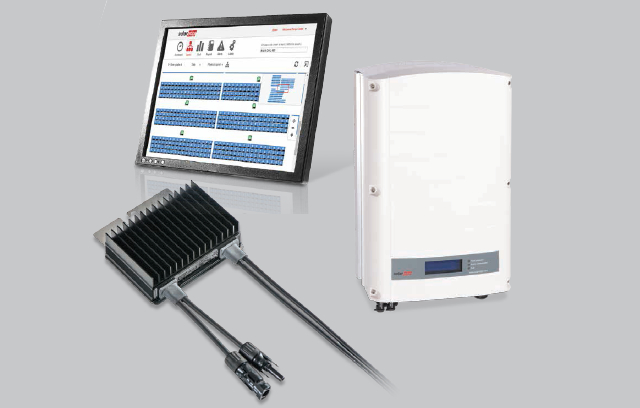
Solar monitoring: the metrics dashboard for your panels.
For anyone interested in installing a new solar system, or if you already have one in place, there are likely still some questions about how your system will perform once it’s actually up and working. You might not have heard of solar monitoring before, but it will help you answer questions like:
- How much energy is being produced?
- How does rain or snow affect my production?
- How much energy do my various appliances use?
- How will I know if something has gone wrong?
Because solar power is a huge investment it is important to make sure that you are getting a good return on this investment. Many people are also interested in how solar power works and to see exactly how their system is performing.
Let’s check out some of the main advantages you’ll have by adding solar monitoring to your home system:
Advantages of Solar Monitoring:
Advantage #1: Having Live Data
It’s possible that a small monitoring panel came with your system by default, but the most basic systems do not provide the best data. One great feature of an advanced system is that you’ll often have access to live data about your performance. This means that instead of seeing updates every 10, 15, or 30 minutes you’ll see updates every few seconds.
Once you’re able to see these frequent updates, you’ll be able to clearly see how things affect your system by looking at shade during the day, turning off appliances, and seeing the real-time effects of rain and snowfall.
More frequent data also smooths out your data reports and means that the analysis will be more meaningful because it will have access to many more data points.
Advantage #2: Knowing Expected vs. Actual Solar Production
When you are picking out your solar panel system it will likely have some amount of expected solar production attached to it. Your installer will use averages from your area or actual sunlight readings along with your system size to determine how much energy it should be producing on an average day. The number that they arrive at is extremely important because it will determine how much you will be saving with your system on a monthly and yearly basis.
Depending on how you structured your contract, your system’s production may even be guaranteed. In this situation, it would be extremely important for you to know exactly what your system is producing to make sure you’re getting your money’s worth!
Advantage #3: Increase in Performance and Efficiency
If you have access to the complete details of your solar system then you will be able to see ways to improve your performance. Say, for instance, that you see a couple of the panels on the left side of your roof are starting to produce less power during certain parts of the day.
You could use this real-time data to check and see what the cause might be. Perhaps some tree limbs are starting to grow over your roof. Maybe they are getting dirty for some specific reason. Either way, a monitoring system will allow you to capture these performance increases in your system.
Advantage #4: Optimize your Energy Use
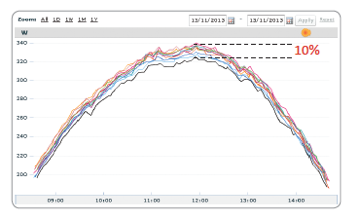
With any solar system, your production will be highest during the times of day in which the sun is brightest and aiming directly at your panels. It is during this time that you’ll want to time any high-consumption activities, such as pool pumps or recharging an electric vehicle, to coincide with your peak energy production. On the other side of the coin, you’ll be able to see when your production is lowest and try to avoid high-energy activities during that time of day.
Advantage #5: Resolve Troubleshooting and Alerts

Most systems come with advanced troubleshooting and diagnostics features. These will show you when a piece of equipment has failed, possibly avoiding a long period of time with lost production. Something as simple as a pest chewing through your wires could take ages to diagnose and locate without some type of solar monitoring software.
Which Features Differentiate Your Options?
As we begin to look at different options in the solar monitoring space, we’ll see that there is a huge amount of variation in what exactly each company is offering. Some systems want to maximize the amount of customizability while others want to offer the simplest process possible and everything in between. Here are a few ways in which your solar monitoring systems could vary:
- Measuring Interval – Your system could update every 15 minutes or every few seconds.
- Communication Methods – Your system could communicate via WiFi or you might have to manually upload data.
- Type of Inverter – If each panel has its own micro inverter then you will often be able to diagnose individual panels. One central inverter might not allow this.
- Cost – Some systems have a one-time install cost, others have a monthly, some have both!
- Ease of Use – Does your system offer a portable monitoring solution like a phone app? How difficult is it to use?
Most Popular Solar Monitoring Companies
There are lots of companies in the solar industry that offer some type of monitoring service. These services are either built into their own hardware, offered as an add-on piece of hardware, or simply plug into existing systems to provide information. Because of the wide-ranging differences between the systems, they all offer something a little different in terms of features, pricing, and convenience.
Let’s take a look at some of the most popular options for solar monitoring companies:
1#: SolarEdge Monitoring
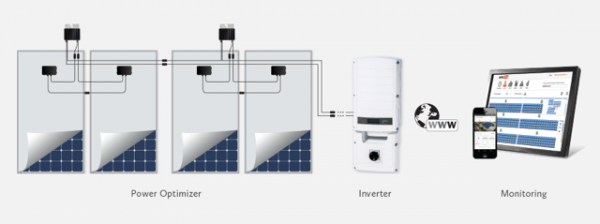
SolarEdge has been around since 2006 and was founded and incorporated in Delaware, going public in 2015. They exist primarily as a secondary equipment provider for solar panel systems by selling power optimizers and inverters. Their SolarEdge PV Monitoring Platform is built into their hardware and it is offered along with the others as a complete package. This would allow you to take solar panels from other companies and couple it with the unique features of the SolarEdge system.
- SolarEdge Power Optimizer – These power optimizers are either installed onto each PV module or embedded by module manufacturers, replacing the traditional solar junction box. These allow for increased energy output and allows for monitoring the performance of each module. Using these power optimizers allows the customer to have the flexibility and features of a micro inverter without the added costs.
- SolarEdge PV Inverter – This inverter is specifically designed to work with their own optimizers. By using these components together, the inverter is simpler, more cost-effective, and more reliable than a traditional setup. It has a standard 12-year warranty (extendable to 20-25 years) and has a weighted efficiency rating of >97%.
#2: SolarEdge PV Monitoring System

This company has put a lot of effort into creating an optimized, all-in-one type of solution for your monitoring needs. Just keep in mind that you will need to be using their other equipment to effectively use their monitoring system. Let’s take a look at the major feature set:
Pros
- Enables a top-down, visual map view of your panel installation
- Shows real-time performance data for individual modules and for the whole system
- Allows for historical and aggregated data, analysis, diagnostics, and guided root-cause fault analysis
- Alerts user by email when a fault is detected along with troubleshooting advice
- Remote service capabilities
- High-resolution data from up to 12 months prior with visualization options
- Service is free for 25 years when you purchase a system
Cons
- Requires use of multiple SolarEdge Products to work
- Requires an optimizer for each module in your system
Take a look at a home owner’s experience and review with a SolarEdge system:
#3: Enphase MyEnlighten

Enphase has been around since 2006 and has proven to be a major player in the solar energy space. In 2008 they actually introduced the world’s first microinverter system and since that time the technology has been an integral part of their total energy strategy. They go one step farther than SolarEdge by seeking to offer a complete, all-in-one package that includes everything you need to create an efficient and tightly monitored system for your home.
Their hardware solution consists of Enphase microinverters that will connect to each solar panel in the system. All of those modules will then connect to an Enphase Envoy – basically, the hub used to combine the data from each panel and feed it to the monitoring system and the Enphase AC Battery. From that point, you can access system data from your home or over their cloud-based software called MyEnlighten. Let’s take a look at MyEnlighten’s feature set:
Pros
- Real-time monitoring of data and system performance
- Automatic emails of any event that affects system performance. You can view maintenance issues on graphs or a map of your system.
- Secure, backed-up online data storage
- Compare actual system performance against the modeled data to see how your system is producing
- Share data across social media
- View historical weather data along with analysis of how it affects performance
- Today’s performance at-a-glance
Cons
- Requires multiple pieces of equipment from Enphase
- Requires a microinverter on each panel
If you are looking for a complete, easy-to-use system that allows for great mobile access to advanced monitoring features, Enphase’s MyEnlighten looks like it could be a good option.
Below is a video of an Enphase customer going through the software and experience:
#4: Locus Energy
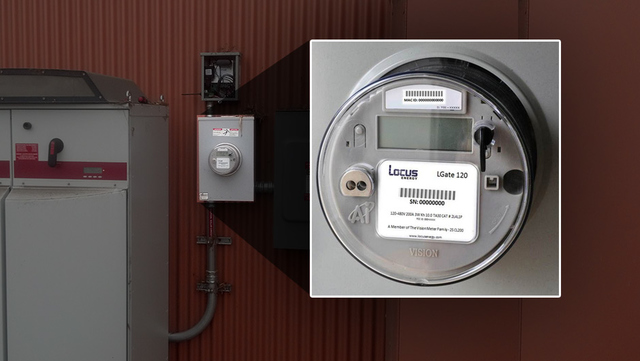
As opposed to the two companies we’ve looked at so far, Locus Energy doesn’t produce its own proprietary inverters, batteries, or optimizers. Instead, they produce a piece of equipment that can tie-in to a variety of other installations and provide data on their output. The main drawback to sourcing data in this way is that there is no way to monitor performance from individual modules from their products alone. Their solution is meant to provide general data on your system and doesn’t dig too deeply into the finer details. Let’s look at a few features:
Pros
- Modular interface allows you to hook their product into a wide range of preexisting installations or plan it as part of your future build
- Current and historical data
- Reporting tools
- Net metering data shows you how much power you are adding to the grid vs. drawing from it
- On-site data storage with backup and offline access
- Neat visualization of environmental benefits such as gasoline offset or homes powered
Cons
- Can’t see data from individual strings or modules
- No troubleshooting information or alerts about problems with your system
- Limited ability to diagnose performance issues or optimize efficiency
Here’s a video of the software in action:
#5: AlsoEnergy
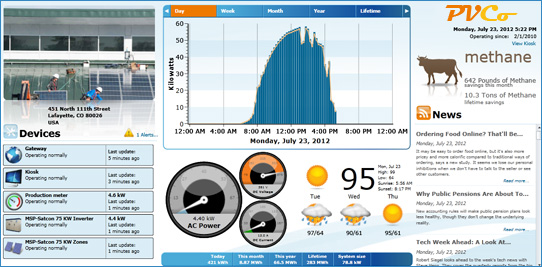
Founded in 2007, AlsoEnergy is another company that focuses on providing a tie-in solution to either previously installed systems or to compliment a new build. They developed their own software, PowerTrack, and then added DECK Monitoring to their product line after acquiring the company that created it in 2013. This allows for both an option between advanced-level and an essentials-only software for your installation. Here’s what both options offer:
- Revenue-grade Reporting
- Production values and status indicators
- Compare actual production against benchmark values
- Automated alerts for device status and system performance
In addition to this, their individual options offer:
AlsoEnergy Option 1: PowerTrack
- Has data points for lots of factors including performance models, shading, panel tilts, seasonal variation, etc
- Workflow Suite for installers and operators that need access to multi-site monitoring and maintenance planning
- Personalized string maps
- Apps for iPhone, iPad, and Android
AlsoEnergy Option 2: DECK Monitoring
- Intuitive tools and navigation to simplify routine tasks. Emphasis is on user-friendliness around alarms, analytics, and reporting
- Great front-facing PR tool for public displays
Pros
- Works with a variety of other equipment providers
- Different levels of software for different levels of needs
- App support on a variety of devices
Cons
- No module-level data from individual panels
Conclusion
After looking at some of the most popular options, it’s easy to see how much variation there is in the solar monitoring market. Your final choice will depend on exactly what it is you’re looking to get out of your system, but we think that SolarEdge takes the win here for their overall feature set and convenience. Although there will be more equipment to get up and running, having access to all of the information that their system provides could be worth it to many buyers, enabling your system to perform at its expected level.
With SolarEdge, you’ll get a complete system to couple with the solar panels of your choice and you won’t have to worry about assembling a hodge-podge of different options. You’ll get access to live, visual data, historical analysis, troubleshooting alerts and diagnostics, and much more.
SolarEdge looks to be a great option for anyone looking into maximizing their solar panel system.
Photo Credits:
Images courtesy of SolarEdge; Enphase; Locus; AlsoEnergy.
